In August, my father (Art Beal - a robust 93) and I set off on an exciting adventure. I guess you could call it an “Epic Watertrip”! So I thought you might like to see some photos and hear a bit about our excursion.
Mike said if I chose the photos and wrote the commentary, he would put it up on the web for me. The following is a collaboration of my pictures and writings and Mike’s web expertise.
We boarded a plane in Ft. Wayne, Indiana at 6:15 a.m. on Sunday, August 15, 2010, and flew to Seattle via Dallas/Ft. Worth. We were a bit nervous we might experience flight delays along the way, and although we would have plenty of time to get to our cruise ship with no air delays, an hour or so of sitting on the tarmac (or something similar) could cause us some big problems. We didn’t want to have to join the ship three days later in Juneau.
Everything went like clockwork, however, and we arrived in Seattle around 11:15 a.m. and embarked by 12:30 on the Norwegian Pearl bound for a week in Alaska!
The first thing they do when you get on the ship is snap your picture. Later the picture is superimposed on a photo of the ship and offered to you for purchase, the first of many such photos. I did purchase this first one because it came out well and was so commemorative of our trip.
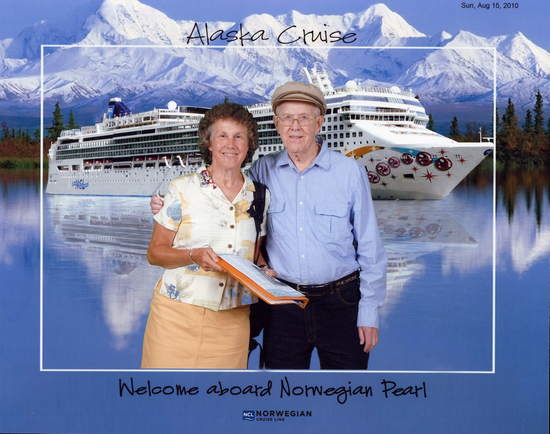
After our first of many memorable meals and buffets, we got settled in our cabin. My dad decided to take a rest and I headed out to see some sights on the ship and take an official tour.
Here are a few shots from around the ship, even though some of them were taken later during the week.
Click on the photos below for a larger image.

As we left Seattle, I took this photo showing part of the deck with the Seattle skyline in the background.

Many people were already busily engaged in swimming, hot-tubbing, dancing and eating barbecue with all the trimmings.

This was the view from the other side of the ship.

One place we really enjoyed was the Spinnaker Lounge up on deck 13 fore - a place with great lounge chairs and windows all around. Sometimes they held events there and then it got very crowded, but in the mornings after breakfast if was a good place to relax, read, drink coffee, etc.
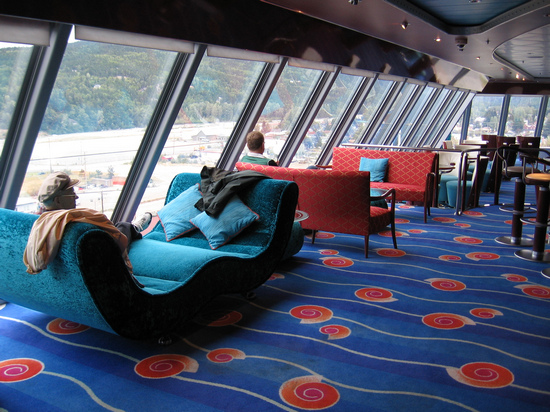
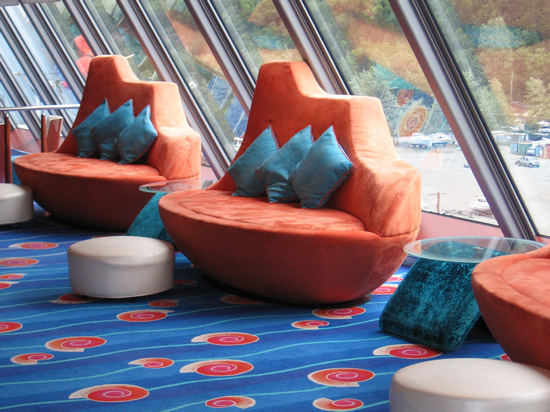

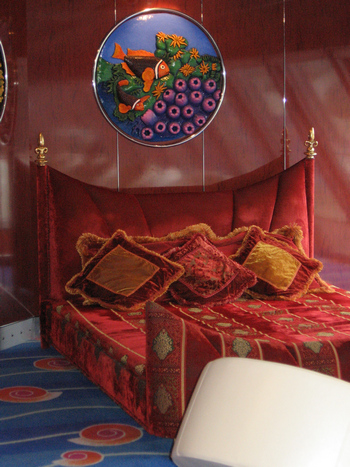
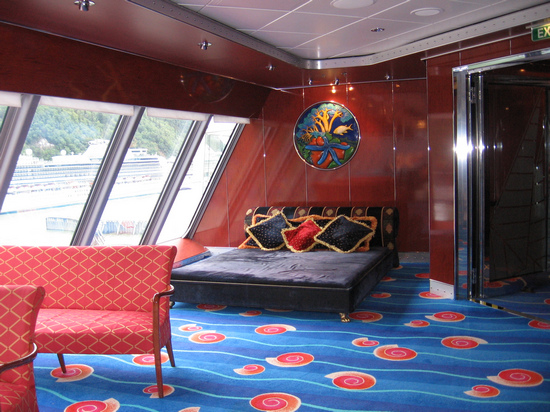
Yes, these beds were there also, usually occupied by kids or families.
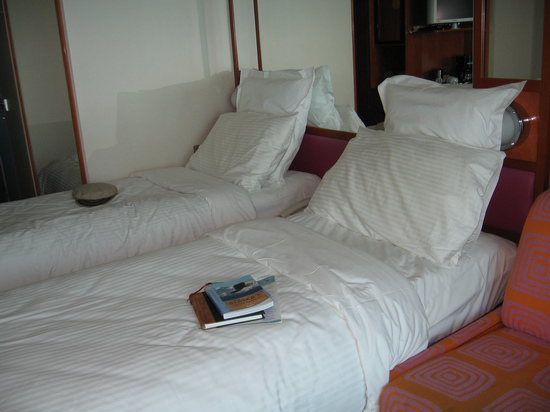
Here is our cabin. We also had a little “couch”, a small table and chair, fridge, closet, drawers and cubbies, coffee station, TV and small bathroom w/shower.

We also had a balcony. I sat out there some mornings with my coffee, wrapped up in a comforter. And it was a wonderful place to view the scenery when the common areas were packed with people.
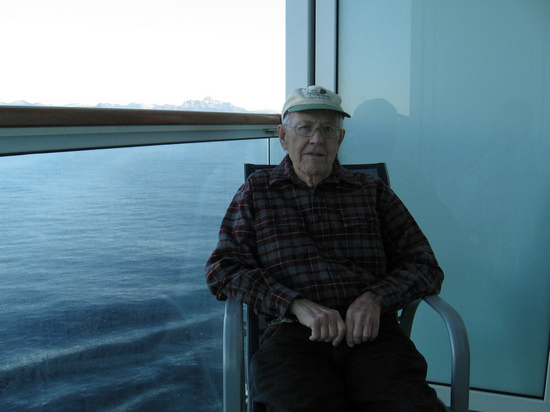
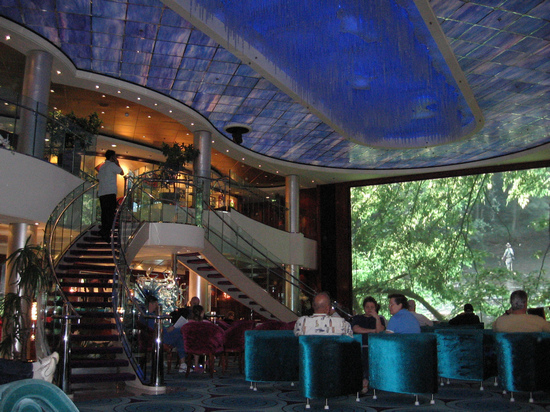
I was amazed at the interior of the ship. This is a seating area called the “Crystal Atrium, so called because of the crystal stalactites hanging from the ceiling. The large screen often showed various scenes from nature and sometimes showed scenes from offered on-shore excursions. The stairway leads up to several restaurants on the upper level.
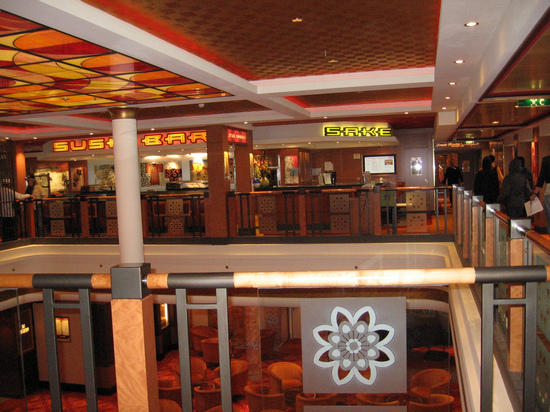
This photo was taken from an upper level balcony and shows two of the specialty restaurants.
After a full day at sea, we arrived at Juneau, our first port of call. Many excursions were available, but we chose to see some highlights of the city by bus, take a trip to the Mendenhall Glacier, and visit a salmon hatchery.

Through the windows of the bus, you can see a bit of the “tourist strip” close to the port.
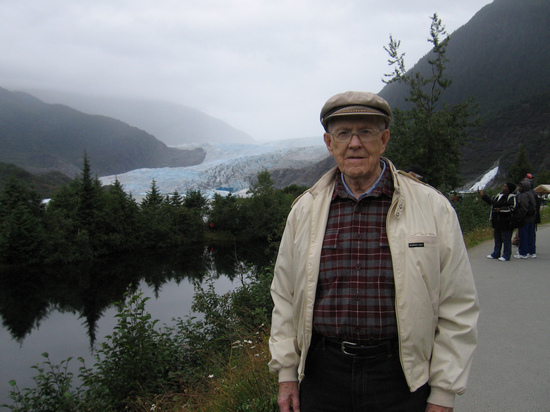
Wikipedia has this to say about the Mendenhall Glacier:
“Mendenhall Glacier is a glacier about 12 miles (19 km) long located in Mendenhall Valley , about 12 miles (19 km) from downtown Juneau in the southeast area of the U.S. state of Alaska .
Originally known as Sitaantaagu ("the Glacier Behind the Town") or Aak'wtaaksit ("the Glacier Behind the Little Lake") by the Tlingits, the glacier was named Auke (Auk) Glacier by naturalist John Muir for the Tlingit Auk Kwaan (or Aak'w Kwaan) band 1888. In 1891 it was renamed in honor of Thomas Corwin Mendenhall . It extends from the Juneau Icefield , its source, to Mendenhall Lake and ultimately the Mendenhall River .”
Below are several pictures we took there. It was cold and spitting rain, but still magnificent!

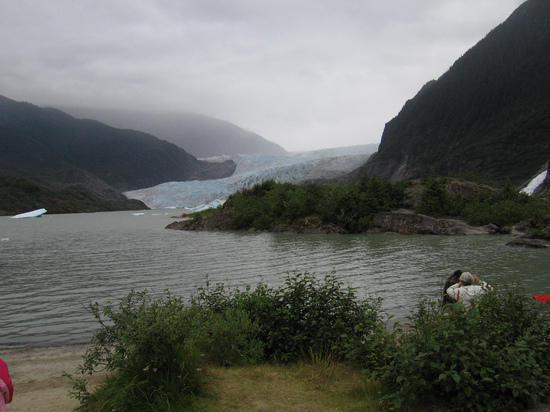

On we went to visit the salmon hatchery. The Macaulay Salmon Hatchery raises chum, pink coho and king salmon. On display are a number of aquariums with salmon and other sea life native to the area. It also afforded us some good photo ops as you can see by the photos below.

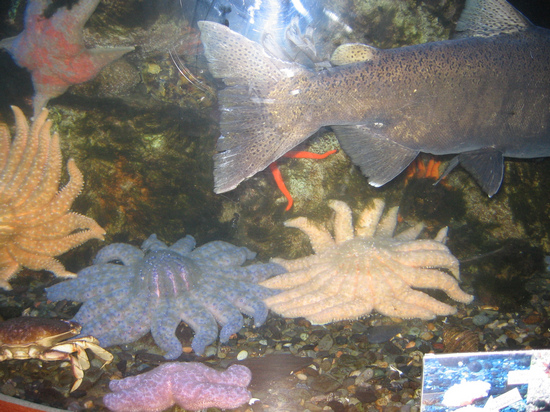
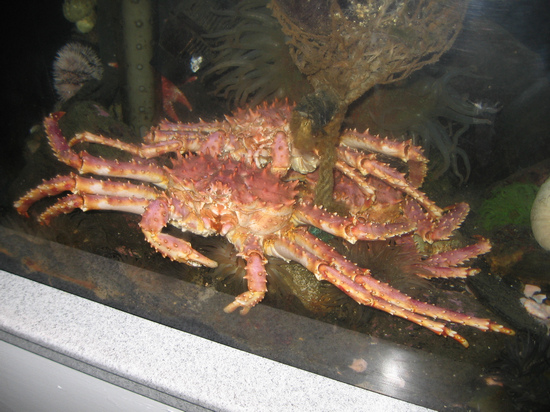
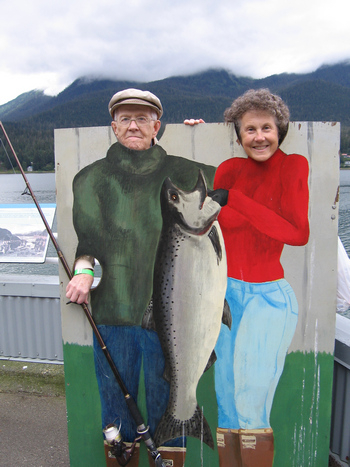
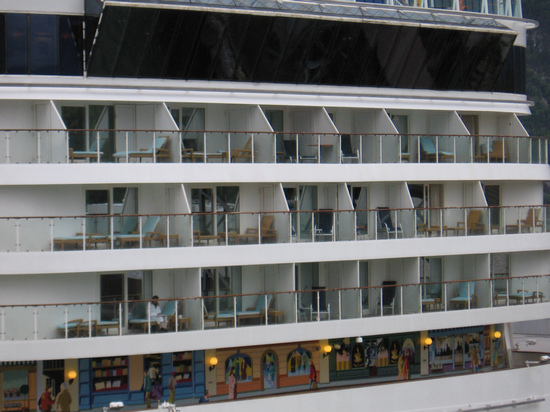
Our next port of call was Skagway. During the early 1900s Skagway was known as the "Gateway to the Klondike“.
When we docked, we were next to our sister ship, the Norwegian Star. I took this photo of the ship and also a closeup of some of the ritzier balconies.
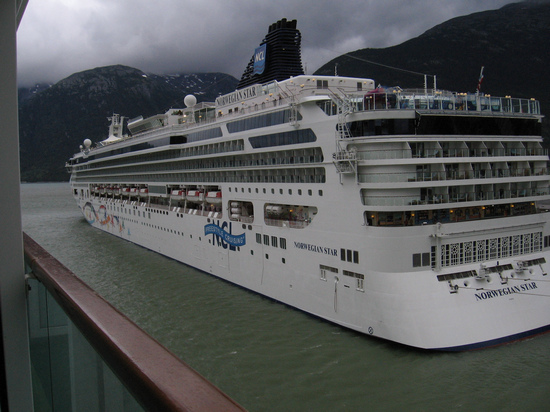
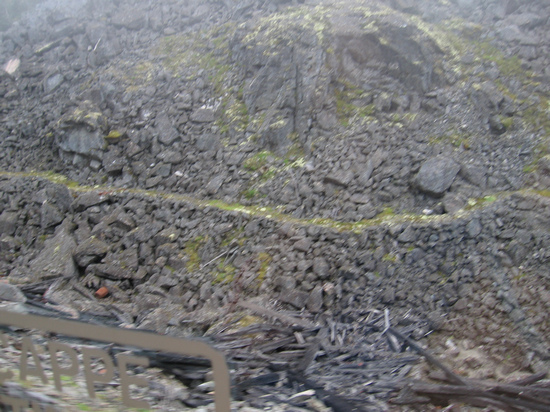
We had been looking forward to the railway trip to White Pass. This was the most popular excursion at the port of Skagway and the following photos will show you why. All photos were shot through the train car window.
The guide told us this mossy path pictured above was one the prospectors took on their trek in search of gold.
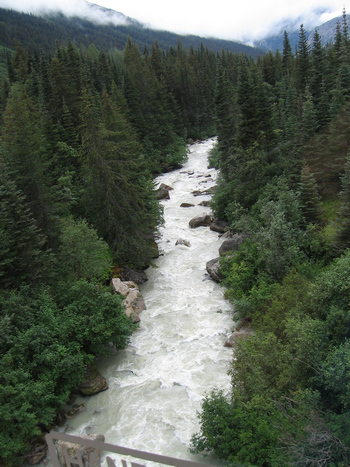
The Skagway River.
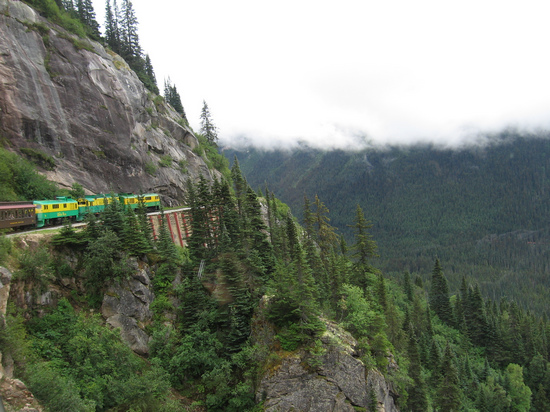
Here you can see our train chugging away in front of us.

One of many glorious views, this photo shows an abundance of Sitka spruce, the largest species of spruce, named for the community of Sitka. The Sitka spruce is the official state tree of Alaska.
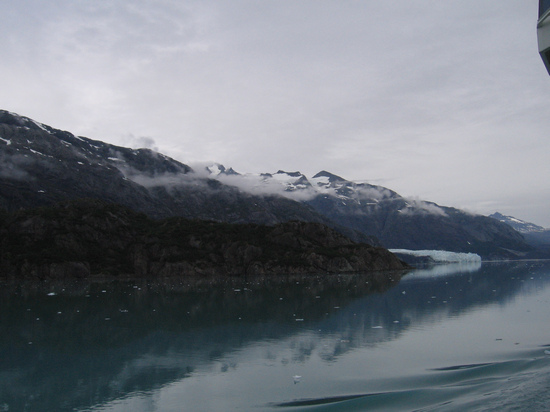
The next day brought a visit to Glacier Bay - what I considered to be the highlight of the trip. Glacier Bay is a National Park, and at 6:30 a.m. that morning, several park rangers came out in a small boat and boarded the ship to give us commentary during our visit to the bay.
It was one of those occasions when you snapped picture after picture, attempting to catch the grandeur of the moment and failing. I hope the photos below can give you a small part of the feeling of this special place in nature.

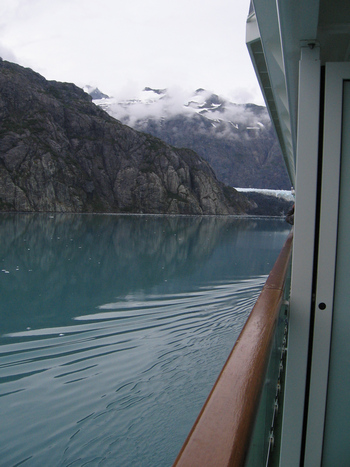

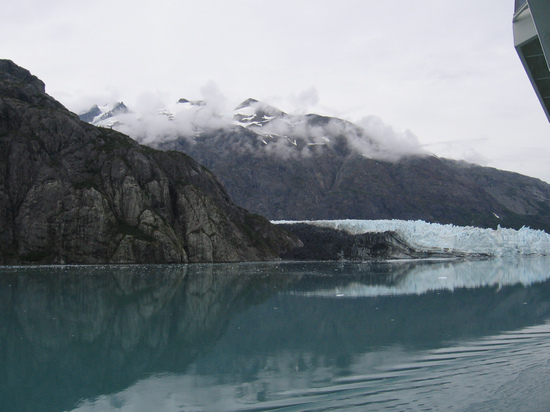
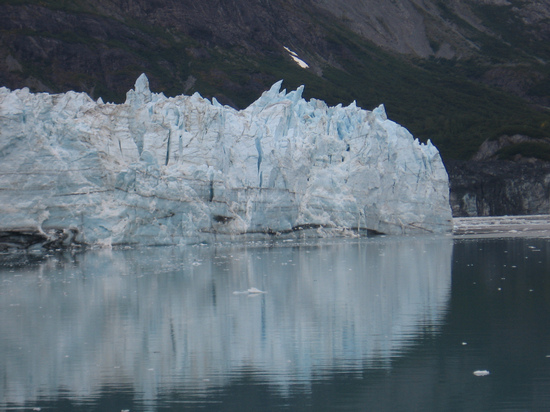
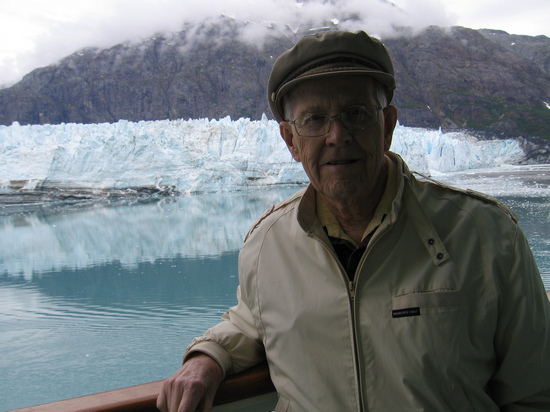

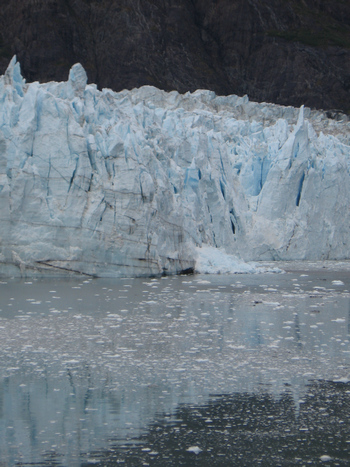
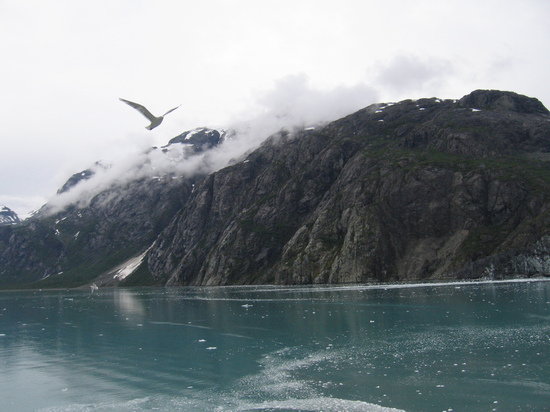
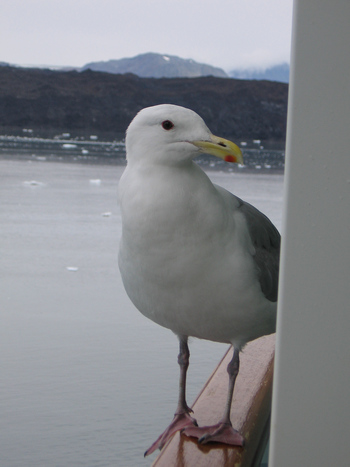
The gulls loved us tourists and would come wheeling out around the ships looking for handouts. This one perched on our railing to accept a walnut and stayed for several minutes hoping for more. I’m not sure which of the Glacier Bay gulls this is. It could be a Herring gull, a Glaucous gull or a Glaucous winged gull.

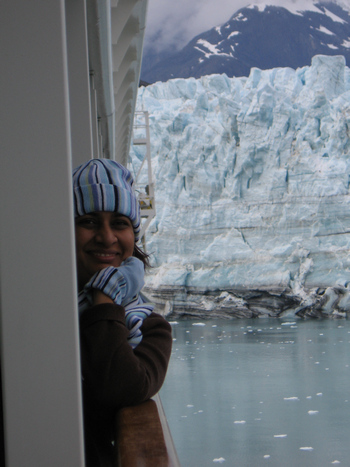
We chatted with our neighbor who was also out on her balcony viewing the sights.
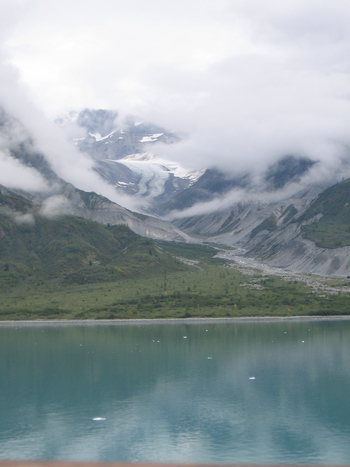
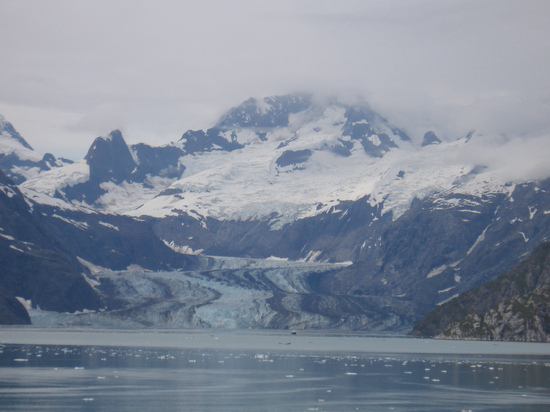
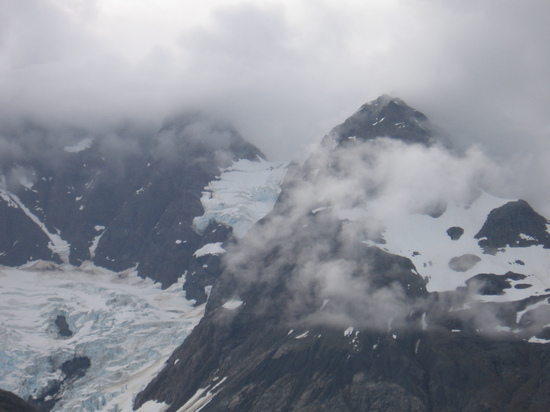
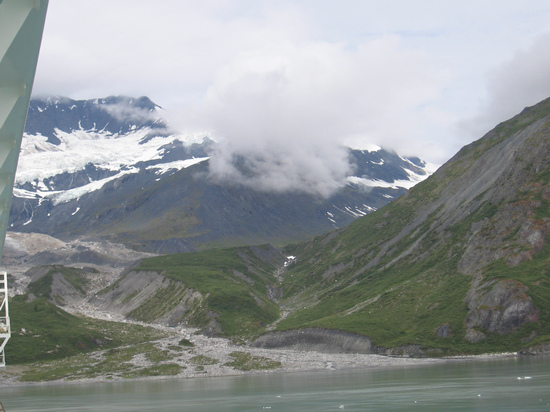
Our next stop was Ketchican. Located within Tongass temperate rain forest, the town of Ketchican and surrounding area average 152 inches of rain a year!
The National Forest Service has this to say about Tongass:
“The Tongass National Forest, the nation's largest national forest, covers most of Southeast Alaska, surrounding the famous Inside Passage. It offers unique chances to view eagles, bears, spawning salmon, and the breath-taking vistas of "wild" Alaska. “
At this port I was scheduled to visit an island in the rain forest. My dad had planned to go to the eagle sanctuary, but decided to relax and enjoy the ship instead.
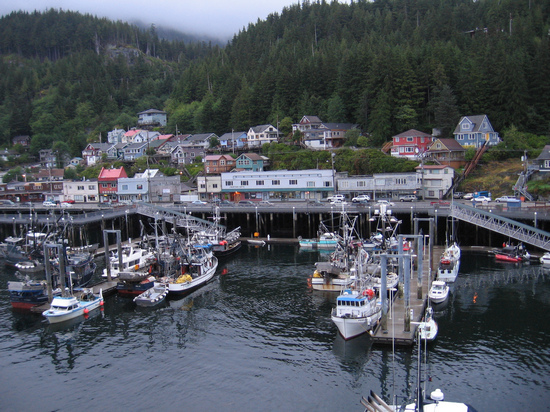
Here is a scene of the port at Ketchican, taken from the ship after we had docked.
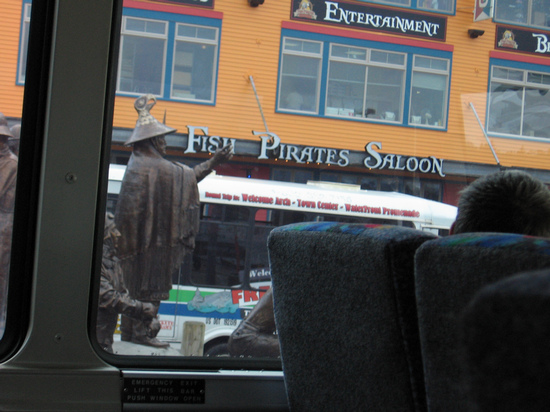
I snapped this “tourist trap” from the bus window on our way to the marina.
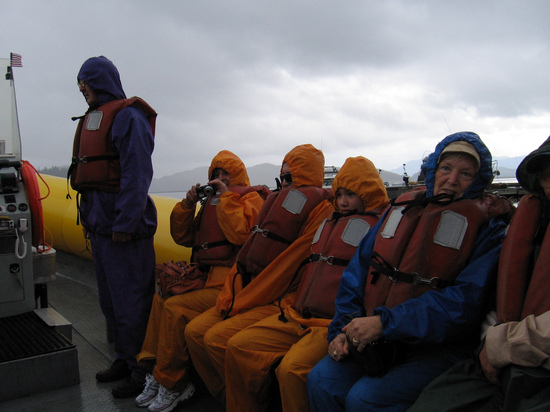
Fifteen of us intrepid voyagers donned rain suits and climbed into the boat that would take us to our “Rainforest Island Adventure”.
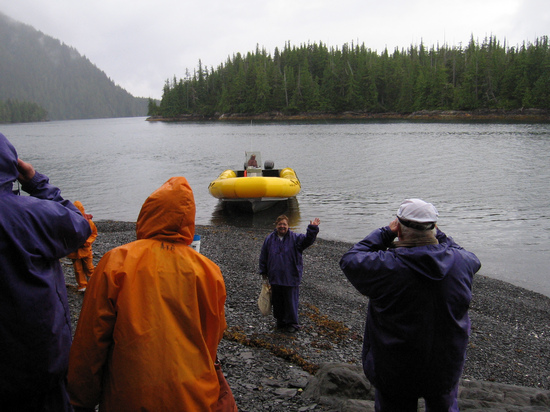
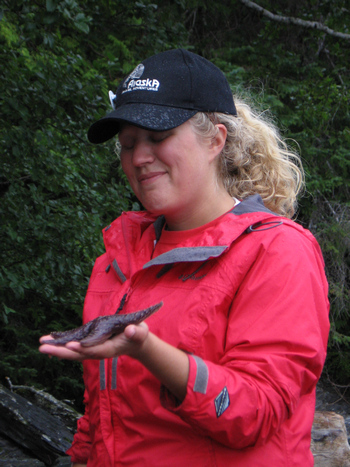
The guide had been dropped off on the island earlier in the day and had collected a good number of various kinds of starfish on the beach along with a little blue crab.
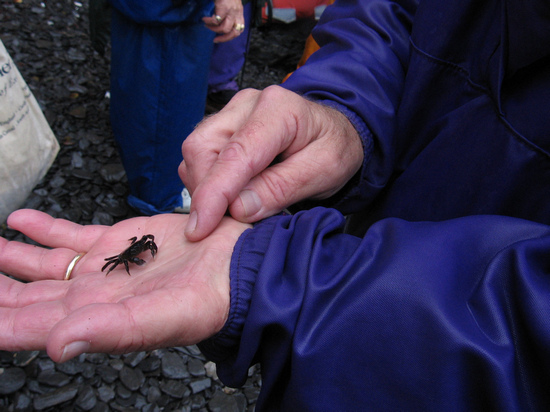

We followed this boardwalk for about a mile through the forest, stopping here and there so the guide could tell us about what we were seeing.
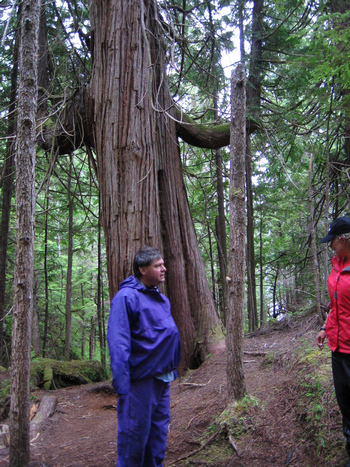
Western Red cedar (Thuja plicata)
“The soft red-brown timber has a tight, straight grain and few knots. It is valued for its distinct appearance, aroma, and its high natural resistance to decay. . . . . . . .Western Redcedar has an extensive history of use by the indigenous peoples of the Pacific Northwest Coast , from Oregon to southeast Alaska.”
Source: WikiPedia
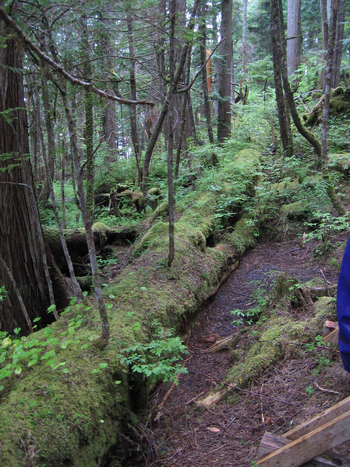
Nurse logs are trees that have fallen and started to rot. New trees apparently do much better when they get started on a nurse log.
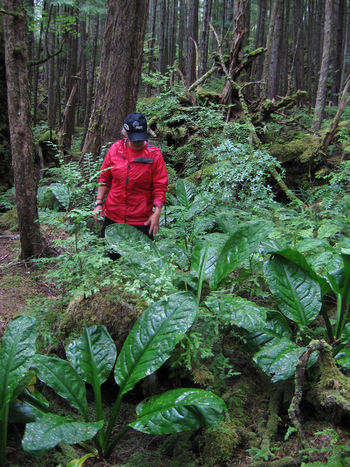
Skunk cabbage - Alaska grows it big!
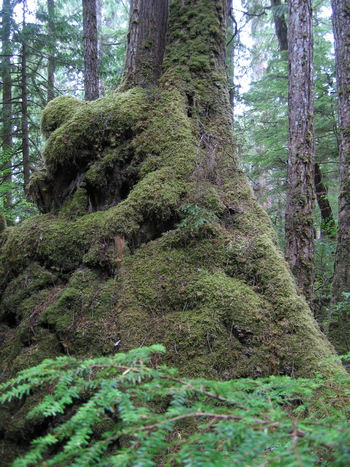
I thought this bulbous root system covered with moss was incredible!

Deer fern (Blechnum spicant). The guide told us that the Native Americans used deer fern as a topical dressing for wounds after observing deer that had shed their antlers rubbing their heads against the ferns.
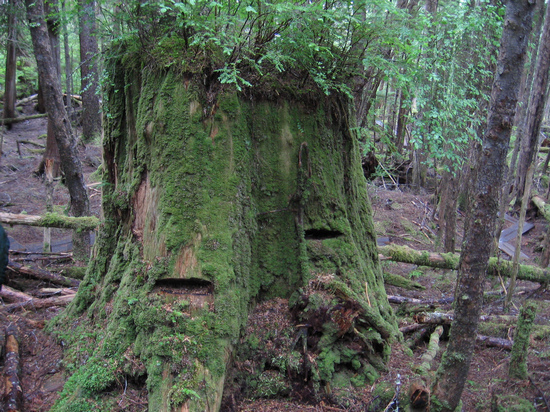
The guide also explained that the bottoms of these big trees were unusable for lumber, but the loggers could not get the right leverage to use their long two-man saws with their arms raised up in the air. So they “notched” the trees and put boards into the notches. Standing on the boards allowed the loggers to more easily use their saws to fell the large trees.
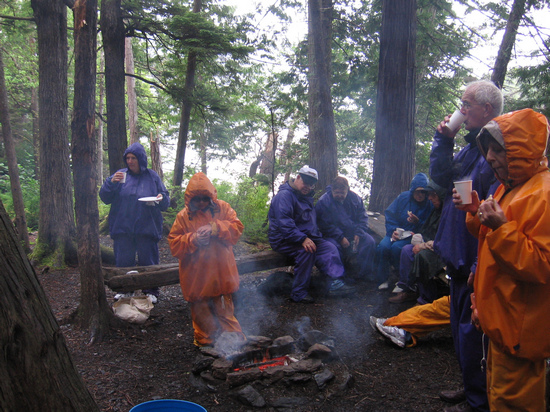
After our hike, a fire had been made ready for us. We warmed our hands, drank hot chocolate and coffee and munched on smoked salmon, cheese and crackers before clambering into the boat to head home.

A serene view from the island.
Our last port of call was Victoria, British Columbia. We were scheduled to see the highlights of Victoria by bus, but when my father decided to relax rather that go through disembarking for the short evening excursion, I decided to make a change in my planned schedule. Instead I joined the “Ale Trail and Brewery Tour. We had quite an interesting trip, visiting 2 pubs and 1 brew pub and tasting ten different beers.
And so our journey came to an end. It was wonderful - a once in a lifetime experience for us - and I hope you have enjoyed sharing a bit of it with us.